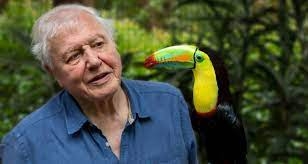The interview of young achiever Vaishnavi Jaiswal

The founder and executive director of Salubrious. She brings in technology to end gender discrimination and empower the less privileged . Meet Vaishnavi Jaiswal as she speakes about her journey to Hasini lakshminarayanan, founder of the first step,a you tube channel that features interviews of young achievers .
What prompted you to get into entrepreneurship and break gender barriers?
Passion for technology has been a part of my life since childhood. After years of doing social work, I wondered how I could apply my skills in an interdisciplinary way, and founded Salubrious.
When I figured out my love for coding, I found that most coding resources were biased towards men, and that few women had adequate opportunities due to these barriers. This didn't feel right to me! It made me realise we're seeing huge disparities when it comes to access to tech in an area that provides so many opportunities. As I researched and read about women who excelled in this field, I discovered they did not receive the same recognition as men did, but were still accomplished. We interview women in the field, including entrepreneurs. Today we have countries, and have reached about 50,000 students across the globe through sessions and workshops.
How does the organisation function?
Salubrious mission is to "Educate, inspire, and empower the youth", to break gender barriers and stereotypes, and use technology to make a sustainable difference in the world. At present, we are focussing on entrepreneurship and technology for less privileged communities. Tech Connect was launched in August 2020, and we have been conducting workshops and engaging women in tech as speakers and mentors for students who need guidance. We teach STEM in an applicable fashion and not in a theoretical fashion to amplify the notion that STEM is a force for social good in a variety of ways, regardless of what your passion is. We cover both social entrepreneurship and tech leadership in every programme we conduct.
Tell us about the Salubrious podcast. And why did you choose Sustainable Development Goal Number 5 - Gender equality?
Launching at the end of March, this podcast will feature change-makers with great social media presence. The major inspiration for picking gender equality was to picture a world where no matter your background or race, everyone is treated equally. Having people from diverse backgrounds, skills, socio-economic levels, sexualities, and ethnic backgrounds all come together to solve the problems that our society faces. Based on the current statistics, I feel there are bigger issues that should be addressed regarding gender bias such as men and women being paid differently though they both do the same work for the same organisation. According to the Monster Salary Index published in March 2019, women in India earn 19 % less than men. IT services showed a sharp pay gap of 26 % in favour of men. A classic example that pay gap exists even in key industries.
What is the one message you would like to pass on to the younger generation?
I would simply say, remember that by being yourself, showing up, and doing the work, you are paving the way for girls to envision a career in fields not limited by gender.
Pursuing a career in male-dominated fields can be difficult, and you may not receive much support from your community. However, you should be aware that many online communities exist to support and help you in case you need resources. You just have to search and you will find them. With so many people with similar resources surrounding us, it's hard to realise that things aren't the same for everybody. Make the most of the privilege and use that to create social change in your little pocket of the world.
What is the one thing you would like to change in society?
There are certain issues that we didn't create but are facing now, such as climate change and cyberbullying. The one thing I could change or work for is to hear young voices and let young people speak for themselves. Not just about gender discrimination, I came across age barriers as well. A person's age has nothing to do with their impact on the work, and youth today must remember to find what their calling is. Among all the distractions, find that one skill that gives you happiness and satisfaction the most.
What are your future plans?
Though I know what my true calling is and what I love to do, my vision may sound like something a 15-year-old can't promise. I would want to work further to bring down gender discrimination through the biggest resource - technology. And as far as Salubrious's future plans are concerned, it's just the same! This is a diverse mission rather than a middle- and upper-class one. Apart from the barriers and the discrimination, I am confident that we will succeed with implementing the right curriculum, teachers, investors, and so on. One day, I envision a world filled with equal opportunities for men and women that leads to a diverse society.


